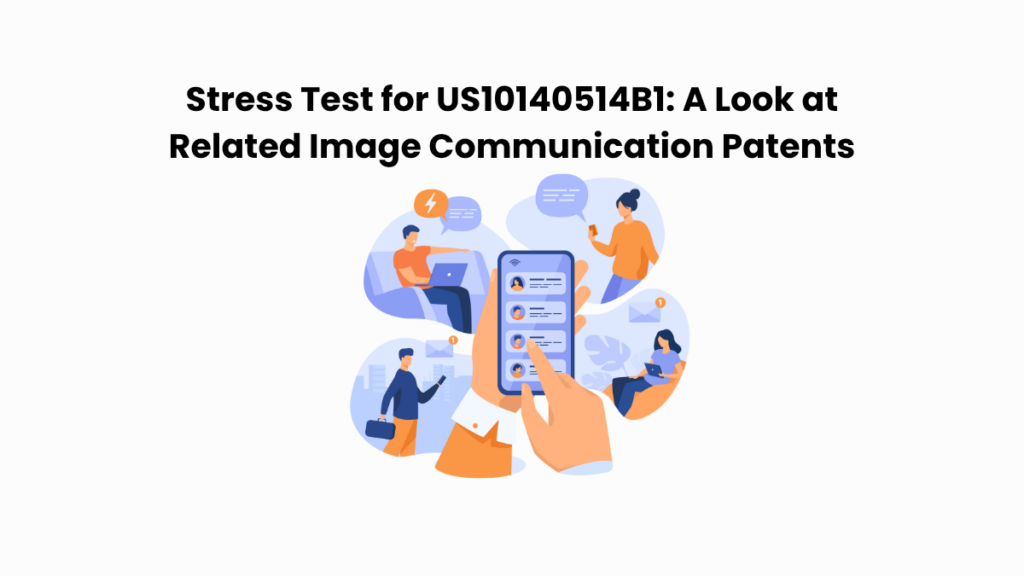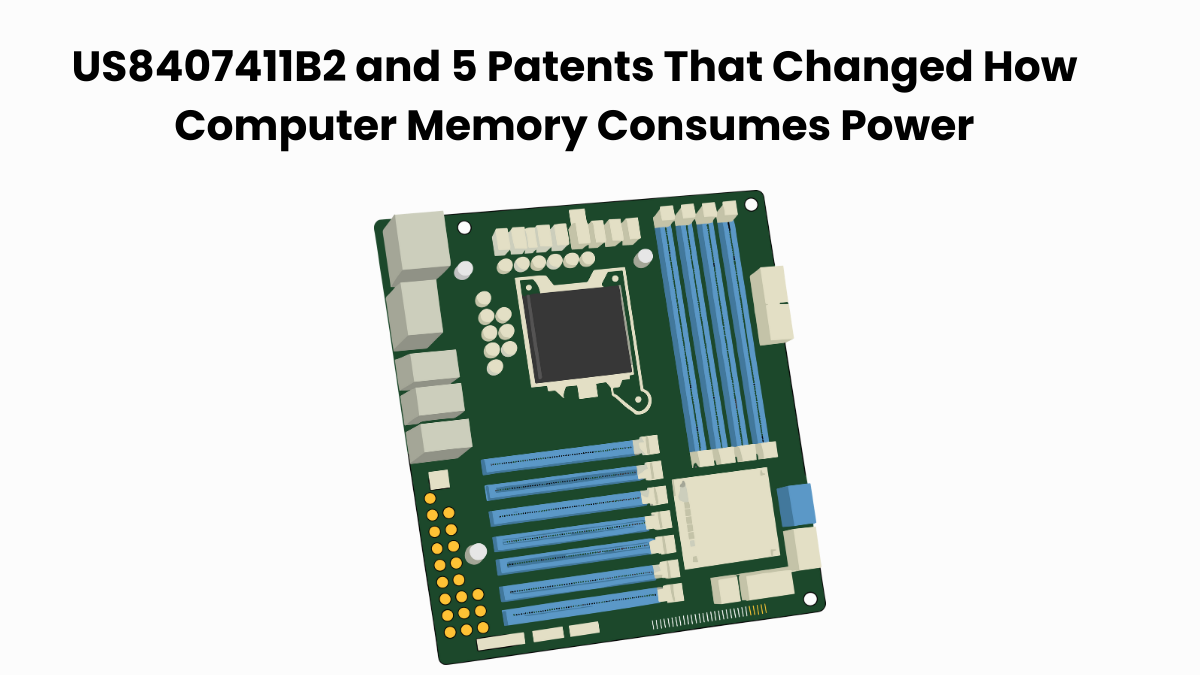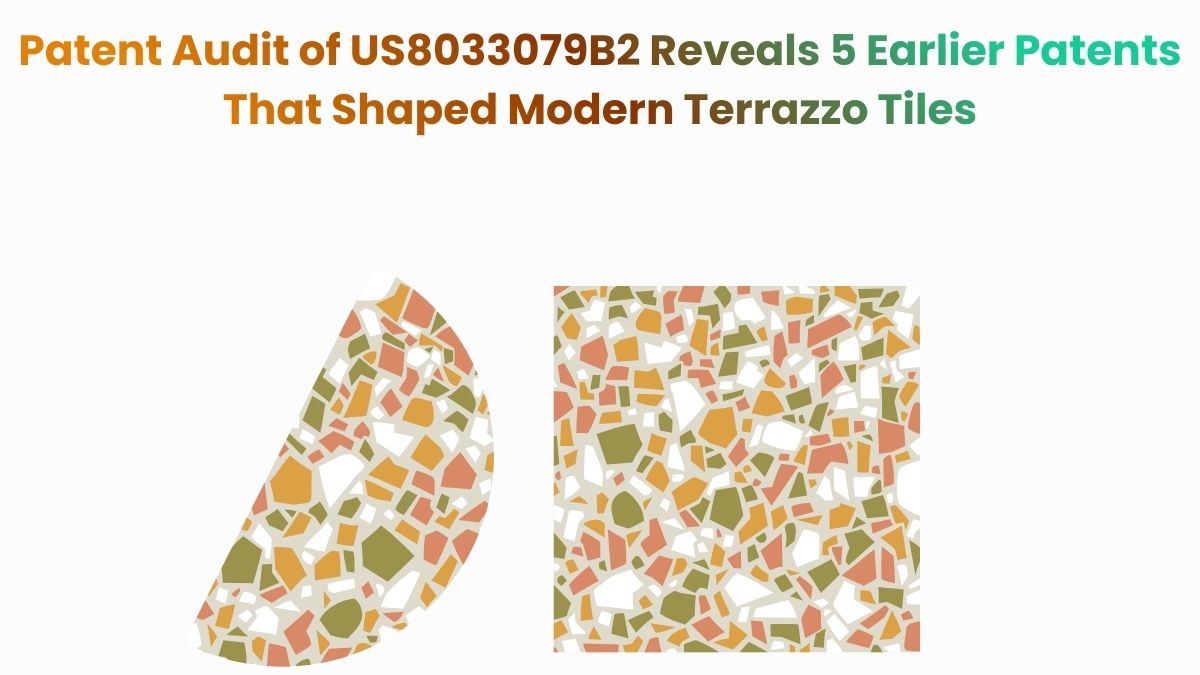Some patents stay in the background. Others grab attention because the ideas they describe start showing up in everyday tech. US10140514B1, which is part of the CheckWizard v. PlainsCapital Bank case, is one of those.
We won’t go into the legal details, but this patent covers a way for mobile devices to send and share images that only last for a set amount of time. Think of photos that appear for a few seconds and then disappear. It also discusses how people can connect and share these images across various types of networks, such as family, friends, or work groups. These ideas have become common in many apps we use today.
In this article, we’ll use the Global Patent Search (GPS) tool to look for other patents that describe similar technologies. Instead of focusing on the lawsuit, we’ll explore how this invention fits into the bigger picture of mobile image sharing. If you’re interested in how this kind of tech has grown, this is a simple, research-backed look into the topic.
Understanding Patent US10140514B1
Patent US10140514B1 introduces a system for sharing digital images across mobile and server-based networks, where each image exists temporarily and carries detailed profile information. These image entities go beyond basic photo sharing by enabling multimedia attachments, dynamic relationships, and timed visibility, offering a rich, structured form of communication tailored to specific users or networks.
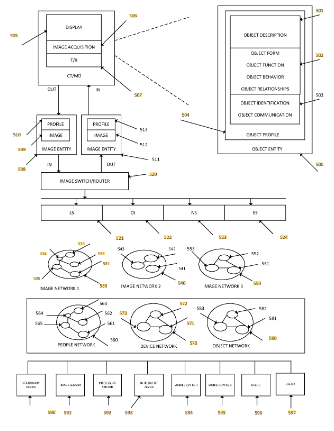
Source: Google Patents
Its Four Key Features Are
#1. Timed image sharing: Images are programmed to appear, remain, and disappear within specific time windows.
#2. Image profiles: Each image includes data like voice, text, user behavior, location, and encryption settings.
#3. Image networks: Images are grouped into networks or hierarchies, where relationships between them are defined and actionable.
#4. Interactive functionality: Touching or selecting parts of an image can trigger other applications, multimedia playback, or device functions.
This patent outlines a multimedia system in which images function as interactive, time-bound digital objects, rather than static files. Its architecture enables highly personalized and controlled image sharing. These features have become increasingly relevant in today’s communication tools, building on earlier mobile trends like gesture-based photography and selfie stick innovation that redefined user-image interaction.
Similar Patents As US10140514B1
To explore the innovation landscape surrounding US10140514B1, we ran the patent through the Global Patent Search tool. Below is a quick glimpse of the GPS tool in action:
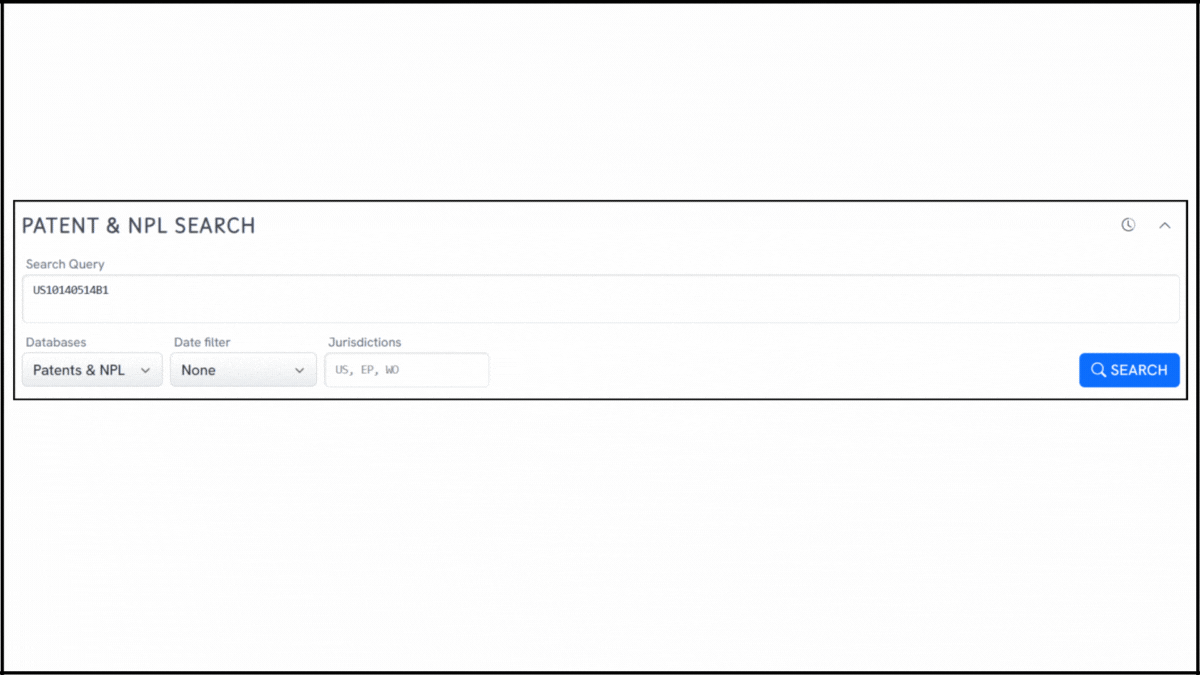
Source: Global Patent Search
This analysis surfaced a list of related patents that share technical similarities in time-bound image sharing, metadata-driven communication, and dynamic visual networking. Below, we highlight four of these references that reflect comparable ideas in image-based mobile communication systems. These examples offer insight into how similar challenges have been addressed across different platforms and user environments.
#1. CN100456715C
This Chinese patent, CN100456715C, published in 2009, introduces a method and system for exchanging image information through an instant communication platform. It outlines a framework where image data is processed and transmitted between clients and servers using a specialized image data module integrated within the communication device. The system emphasizes converting, analyzing, and storing image data for rapid transmission and retrieval within a chat-based environment.
Below, we have added snapshots from the GPS tool highlighting the relevant snippets from the specification for the similar patents.

What This Patent Introduces To The Landscape
- Integrated image processing module: The communication device includes a dedicated module that handles image data analysis, conversion, and transmission.
- Structured client-server interaction: Image and text data are packaged and processed through interconnected storage and analysis modules on both client and server sides.
- Image-to-object data conversion: Image data is converted into object data before being transferred, ensuring format compatibility and secure handling.
- Real-time communication compatibility: The system is tailored for instant messaging environments, ensuring seamless integration of image exchange into text-based interactions.
How It Connects To US10140514B1
- Both patents aim to integrate image-based communication within real-time digital environments.
- Each system includes modules that analyze and manage image data before and during transmission.
- Both emphasize structured communication flows between user devices and network servers using dedicated image handling components.
Why This Matters
This patent reinforces the importance of embedding image processing directly within communication platforms. Its structured client-server framework and focus on real-time data handling offer functional parallels to US10140514B1’s approach to image-based interaction within mobile networks.
Did you know? Vendor-issued tokens in US7177838B1 offer a bank-agnostic path for value transfer. Pairing ephemeral image workflows with closed-loop tokens enables verified deposits and rentals without third-party rails.
#2. US20220092309A1
This US patent application, US20220092309A1, published in 2022, introduces an advanced system for constructing digital image networks for mobile communication. It focuses on transforming individual images into intelligent entities enriched with audio, text, location, and behavioral metadata, allowing them to be shared, processed, and acted upon within virtual user networks. The system supports dynamic control over when and how image entities are displayed and used.
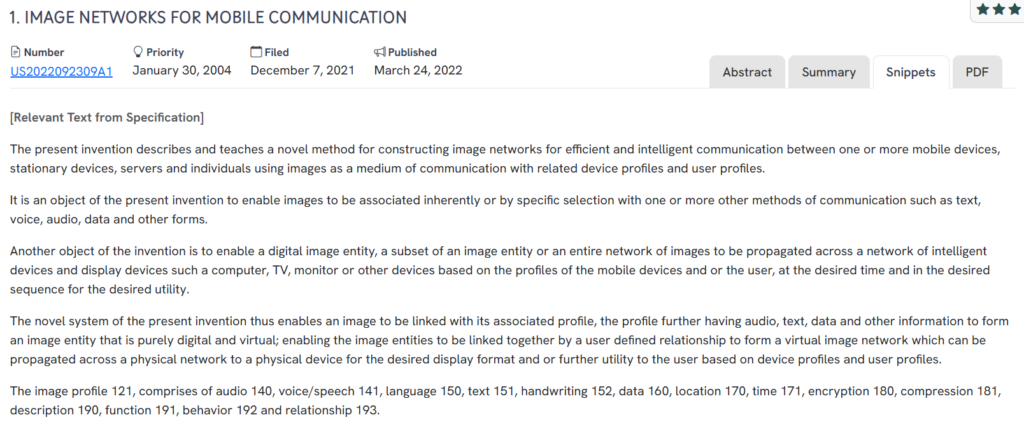
What This Patent Introduces To The Landscape
- Digital image entities with metadata-rich profiles: Each image is linked with user-defined data such as speech, time, encryption, behavior, and other multimedia descriptors to enhance communication.
- Dynamic image networks: The system enables the grouping of images and sub-images into structured, relational networks for synchronized sharing and display.
- Time- and profile-based delivery: Images can be set to appear or disappear based on specific user profiles, device characteristics, and scheduled timing for greater contextual control.
- Built-in security and compression handling: The invention includes keys for encryption, decryption, and data compression, enabling secure transmission and processing of image content.
How It Connects To US10140514B1
- Both patents rely on a framework of image entities enriched with layered multimedia profiles.
- Each describes the use of software-driven relationships between images to build intelligent visual networks.
- Both prioritize secure, real-time delivery of images across user and device profiles within virtual environments.
Why This Matters
This patent expands on the concept of intelligent image sharing by detailing a secure, metadata-driven infrastructure for mobile communications. Its similarity to US10140514B1 underscores the continued relevance of smart image entities in shaping how media is transmitted and experienced across personal and professional networks.
Note: Beyond sharing media with known contacts, some systems pair strangers in live sessions. See Random Chat LLC: Exploring Related Patent Risks for US8402099B2 for profile-driven, random matching across text, audio, and video.
#3. JPH09200712A
This Japanese patent, JPH09200712A, published in 1997, introduces a device for transmitting audio and image data between users. The system allows a receiving user to view both the name and face of the sender, improving the identification process in person-to-person communication. It focuses on visual confirmation as a key part of real-time data exchange.

What This Patent Introduces To The Landscape
- Real-time image and audio transmission: The device supports simultaneous transmission of both visual and auditory information for interactive communication.
- User identification via image data: The receiver can visually confirm the sender’s identity by viewing their face along with their name.
- Enhanced interpersonal communication: By combining names with live images, the system improves trust and clarity between parties.
- Integrated display function: The device includes a visual output mechanism that ensures image clarity for accurate recognition.
How It Connects To US10140514B1
- Both systems use image data to enhance user-to-user interaction within a communication framework.
- Each emphasizes identification and personalization through visual content.
- Both contribute to building user-specific experiences through integrated display and image-sharing functions.
Why This Matters
This early invention reflects foundational concepts in visual communication, specifically, the use of real-time image transmission to enhance identity verification. It aligns with US10140514B1’s vision of using images as central, actionable elements within broader communication networks.
#4. JP2005107904A
This Japanese patent application, JP2005107904A, published in 2005, describes a communication system and terminal capable of exchanging messages using a combination of text, image, and voice data. The invention features an image information database and communication modules that enable terminals to identify and retrieve image data in sync with text message threads.

What This Patent Introduces To The Landscape
- Multimedia message exchange: Messages include image and voice data alongside traditional text, creating a richer communication experience.
- Chronological image display: Image data is stored and shown in chronological alignment with text messages, enabling seamless visual context.
- Image identification between terminals: Communication units are configured to distinguish and retrieve specific images from shared databases across devices.
- Terminal-based image storage: Each terminal maintains its own image database for personalized access and retrieval.
How It Connects To US10140514B1
- Both systems integrate image data with other message formats to enhance communication functionality.
- Each uses image databases and identifiers to organize, retrieve, and display image content.
- Both emphasize communication between terminals or devices as a core part of their architecture.
Why This Matters
This patent supports the trend toward blended multimedia messaging systems, combining image, voice, and text data across connected devices. Its structured approach to image storage and retrieval parallels the goals of US10140514B1 in building organized, image-rich communication environments.
How To Find Related Patents Using Global Patent Search

Understanding the broader patent landscape is key when exploring innovations in image-based communication, ephemeral media, or mobile content sharing. The Global Patent Search tool streamlines this process, helping users identify systems that reflect similar concepts in virtual image networks or timed digital interactions. If you’re exploring advanced tools, you may also want to consider the best AI patent search tools of 2025, which enhance precision and depth.
1. Enter the patent number into GPS: Start by entering a patent number like US10140514B1 into the GPS tool. The platform transforms it into a smart query, which you can refine using terms like image entity, mobile image transfer, or timed multimedia sharing.

2. Explore conceptual snippets: Instead of comparing features claim-by-claim, GPS now offers curated text snippets. These highlight how other systems structure image delivery, assign metadata, or synchronize visual data across user networks.
3. Identify related inventions: The tool reveals patents that manage digital content timelines, attach data profiles to images, or build layered communication structures, showing how similar goals have been addressed through different designs.
4. Compare systems, not legal claims: Rather than focusing on formal legal language, GPS compares system behaviors. This helps users understand how other technologies handle features such as time-bound image control, interactive media, or metadata management.
5. Accelerate cross-domain insights: Whether you’re working in mobile UI/UX, social media architecture, or multimedia networking, GPS lets you uncover related ideas across technical domains that may otherwise be hard to connect.
With this approach, Global Patent Search provides analysts, developers, and IP teams with a structured, concept-driven way to explore related technologies and inform more informed strategies.
Disclaimer: The information provided in this article is for informational purposes only and should not be considered legal advice. The related patent references mentioned are preliminary results from the Global Patent Search tool and do not guarantee legal significance. For a comprehensive related patent analysis, we recommend conducting a detailed search using GPS or consulting a patent attorney.

